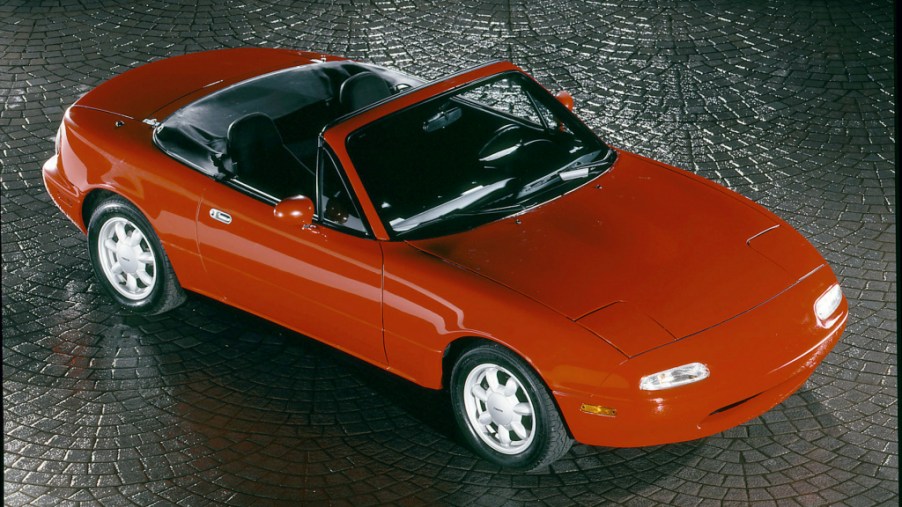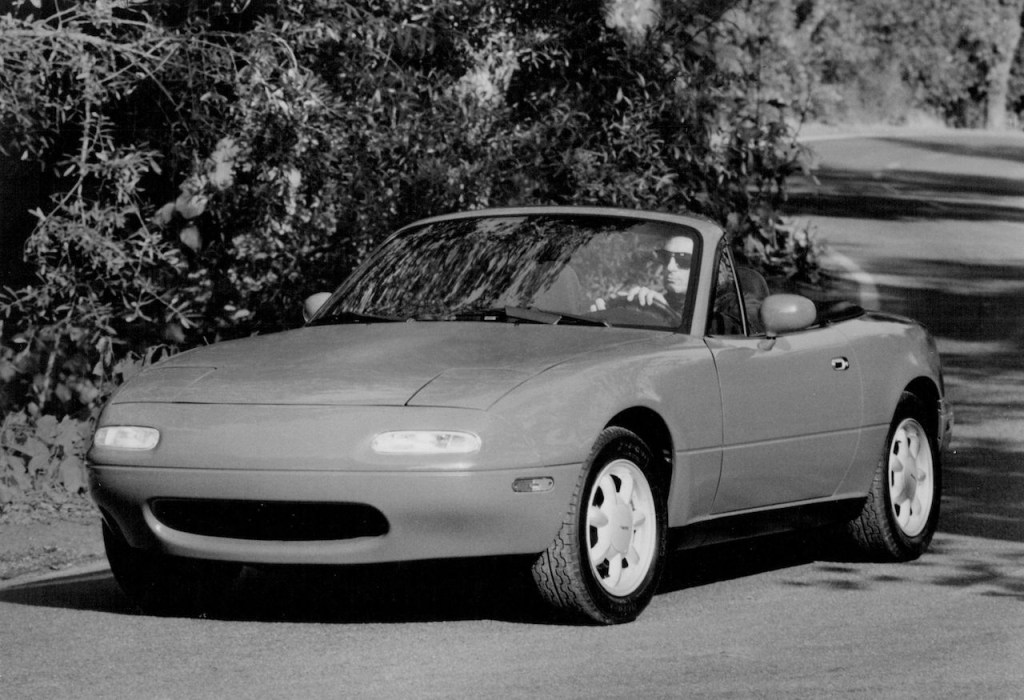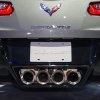
The Story of How the Mazda MX-5 Miata Got Its Start
The current-generation Mazda MX-5 Miata is one of the most capable affordable sports cars available for sale. However, the small sporty roadster’s story began back in the 1980s. At the time, Mazda’s lineup consisted mostly of family vehicles with nothing positioned below the rotary-engine-powered RX7. Mazda took a gamble by investing in a mass-market sports car, but thankfully, over three decades later, the Miata is still a success.
The Mazda MX-5 was almost front-wheel drive

When the idea for the Mazda MX-5 Miata started, the development team proposed a front-wheel-drive option, a mid-engined option, and a rear-wheel-drive option. According to Mazda, the brand’s Tokyo design studio tackled the first two concepts while the U.S.-based R&D team tackled the last.
Once finalized, the concept made its way to Hiroshima for the formal approval of the project. A board of Mazda executives voted on the various designs, ultimately green-lighting the rear-wheel-drive concept developed by the American team. As a result, the development of the Mazda MX-5 Miata began in 1984.
The first prototype was tested in California

Shortly after receiving the green light, the Mazda MX-5 Miata entered the prototyping stage. According to Mazda, the company was so busy developing other models that it was not able to produce its prototype. As a result, the Japanese carmaker hired British engineering company International Automotive Design to build it. The MX-5 Miata’s chassis was based on that of the first-gen RX-7 while the powertrain came from the rear-wheel-drive 323.
Shortly after finishing production in 1985, Mazda shipped the car to Santa Barbara so the design team could judge and test it. The photo embedded above is the actual prototype and the disguise it wore to hide from the public. Mazda reports that plenty of onlookers were curious about the car, often chatting with members of the design team. The design team took note of valuable feedback and factored it into the final design of the vehicle.
It had to be convertible, lightweight and well-balanced

Once the executives approved the Mazda MX-5’s design, the engineering team set about meeting all of the goals set by the project manager, Toshihiko Hirai. Hirai insisted that the MX-5 had to be lightweight, well-balanced, and utilize a very capable suspension system. Aside from that, Hirai required that the manually retractable soft-top employ a user-friendly design. In the concept stages, these requirements were no big deal. When it came time to turn the MX-5 into a mass-market production model, it proved very challenging.
The engineering team eventually managed to meet all of Hirai’s requirements and finished the first production-spec prototype toward the beginning of 1987. The prototype was then shipped to LA, where it was privately shown to 245 people to receive initial feedback. Following the first showing, Mazda decided to freeze all other development efforts during the same year and focus all its resources on getting the MX-5 out into the market. The first-generation Mazda MX-5 made its formal debut in 1989, and the rest is history.


